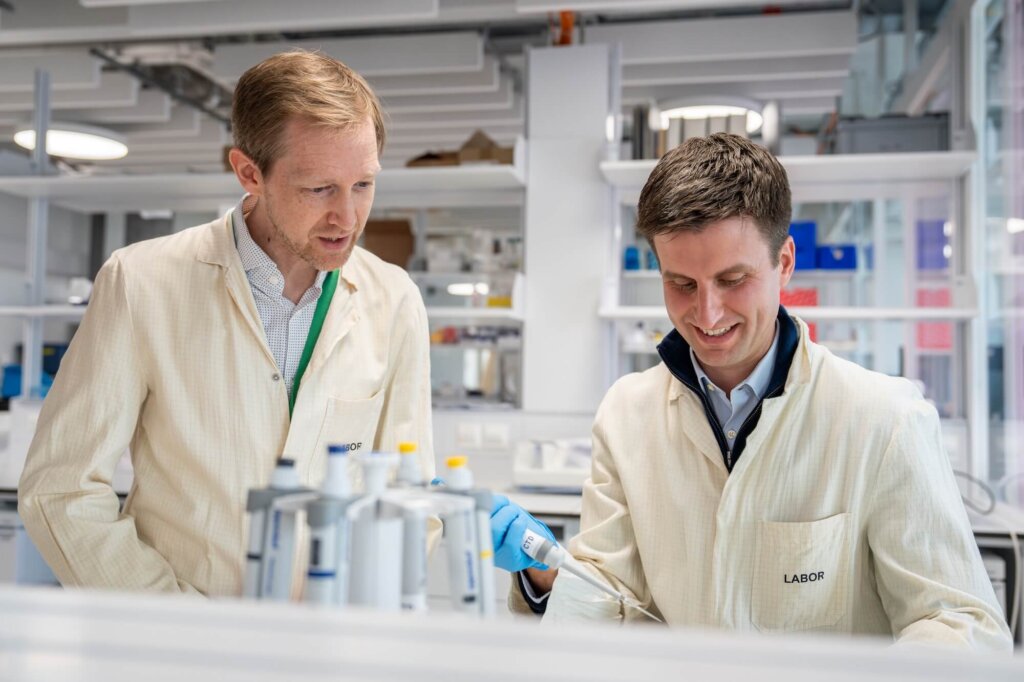Success Story
Insights into a Rare Metabolic Disease
Clinical Trial
How multi-omics profiling (SMOC) can help elucidate disease mechanisms and open up new therapeutic options.
Methylmalonic acidemia (MMA) is a rare, inherited metabolic disorder that impairs the body’s ability to break down certain proteins and fats. The main cause is a dysfunction of the enzyme methylmalonyl-CoA mutase (MMUT), or a failure to produce its active cofactor, adenosylcobalamin. This disruption leads to the accumulation of methylmalonic acid, a toxic byproduct, which can trigger severe metabolic crises as well as long-term neurological complications. With an incidence of about 1 in 90,000 live births, MMA is a rare but serious condition.
Despite first being discovered decades ago, MMA continues to puzzle researchers due to its variability and complexity. Identical genetic mutations can lead to vastly different clinical outcomes, and in some patients, no known mutations are found at all. This variability suggests that additional genes or environmental factors may contribute to the disease.

“Having the PHRT funding opportunity was a breakthrough for our research. Without it, the project could not have made such progress.”
A holistic view
To address these complexities, researchers around Matthias R. Baumgartner, a leading expert in metabolic disorders and head of the Division of Metabolism at the University Children’s Hospital Zurich, adopted a data-driven “multi-omics” strategy. SMOC was an important partner of the research project. Multi-omics combines genomics (DNA), transcriptomics (RNA), proteomics (proteins), and metabolomics (metabolites) to build detailed molecular profiles and provide a holistic view of cellular function. The goal is to connect genetic mutations with functional outcomes, potentially revealing new biomarkers and therapeutic targets.
With the support of Co-PI and the head of research, Sean Froese, a multidisciplinary team brought together expertise in data generation, data analysis and clinical medicine. The project is part of the PHRT program and was conducted in close collaboration between ETH Zurich, EPFL, and the University Children’s Hospital Zurich. Reflecting on the past few years, Baumgartner says, “Having the PHRT funding opportunity was a breakthrough for our research. Without it, the project could not have made such progress.”
The scientists first analyzed 210 fibroblast lines from individuals with MMA using high-throughput techniques. The team found that in addition to the known gene defects, new variants in this metabolic pathway could also cause this disorder. These discoveries expanded the known genetic landscape of MMA. Drawing from multiple parallel investigations, which received additional funding from the Swiss National Science Foundation and ITINERARE, a University of Zurich Research Priority Program on Rare Diseases, the team used patient-derived fibroblasts and neurons to detect fundamental disease mechanisms and explore novel therapeutic strategies. It’s a brilliant example of how multi-omics profiling is able to support clinical research and to clarify disease mechanisms.
Neurological findings
To support the breadth of the investigation, the research team established robust infrastructure for data handling and patient sample processing. Over 250 clinically characterized samples were biobanked using standardized protocols. A centralized bioinformatics platform was developed to analyze sequencing and protein data efficiently. The first papers have been published, and Baumgartner emphasizes: “Having post-doctoral fellow Patrick Forny as first author and Sean Froese as last author, highlights their pivotal roles as clinical investigators in the project.”
Recognizing that MMA often affects neurological function, the research team, led by PhD student Matthew Denley, also reprogrammed patient fibroblasts into induced pluripotent stem cells (iPSCs) and differentiated them into neurons. This allowed for direct observation of MMA’s effects on brain-like cells. These findings offer compelling cellular explanations for the developmental delays and neurological symptoms seen in MMA patients. They also point to promising therapeutic avenues, such as enhancing mitochondrial resilience and mitigating oxidative stress.

More than a single-enzyme defect
By identifying changes in the metabolism of the patient-derived cells, researchers may have uncovered a new avenue for therapeutic intervention. This research effort reveals MMA as more than a single-enzyme defect. It is a multifaceted disorder involving complex interactions between genes, proteins, and metabolic pathways. By combining molecular technologies with cellular modeling and translational science, this research network has paved the way for more effective and individualized treatments for individuals living with MMA.
It’s a success story with a sequel: thanks to the support of the Horten foundation, this research will continue in cooperation with SMOC for at least the next three years.
